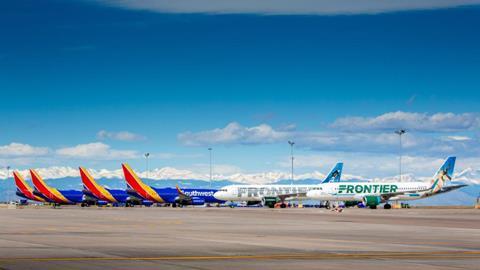The US Government Accountability Office (GAO) has again recommended the US Department of Transportation (DOT) develop a national aviation preparedness plan to respond to communicable diseases like the coronavirus pandemic which brought the air transport industry to a near standstill earlier this year.
It is the second time in five years that the congressional watchdog has called on US aviation regulatory authorities to develop such a plan after a pandemic of global reach. In 2015, following the Ebola outbreak, the GAO recommended a similar preparedness programme, but none has been developed so far.
“DOT is now confronting an even more widespread public health crisis—the Coronavirus Disease (Covid-19) global pandemic—without having taken steps to implement this recommendation,” the GAO writes in a report published on 23 June.

“Not only could such a plan provide a mechanism for the public-health and aviation sectors to coordinate to more effectively prevent and control a communicable disease threat, it could also help minimize unnecessary disruptions to the national aviation system, disruptions that to date have been significant,” says the congressional watchdog.
Passenger air transport across the country came to a near halt as states imposed shelter-in-place orders and travel demand fell to near zero. Many airlines temporarily slashed schedules and mothballed aircraft to save money, almost closing down the entire sector. In the past weeks, airlines have been slowly reinstating flights and bringing aircraft back into operation, but industry observers expect the rebound could take up to three years.
The agency goes on to criticize that the current patchwork of reactions and requirements by airlines, airports and other aviation stakeholders has “demonstrated a need for a more coordinated response.”
“The existence of a national plan might have reduced some of the confusion among aviation stakeholders and passengers,” the GAO writes.
But the Department of Transportation (DOT) disagrees with the recommendations, pushing responsibility for such a plan onto other government agencies.
“Through two administrations, this Department has disagreed with GAO’s recommendation for a separate plan for aviation, which would risk an uncoordinated and disparate approach across different transportation modes and critical infrastructure sectors,” the DOT says. It adds that the Department of Health and Human Services (HHS) “has overall responsibility for communicable disease response and DHS has the lead in preparedness planning for all sectors, including transportation.”
Personal safey and protection from the virus remain vitally important issues in travelers’ decision-making process about if or when to return to the air travel.
Various aviation-related interest groups, including pilots’ union Air Line Pilots, International (ALPA), have criticized the DOT and the FAA for not implementing a coordinated response to the pandemic across all airline and passenger air transport operations. The union says several hundred of its members have been infected with the virus, and the uneven patchwork of measures that airlines have implemented do not keep crew or passengers safe.
ALPA threw its support behind a plan published by the International Civil Aviation Organization (ICAO) earlier this month that provides guidance on how to safely resume air travel as jurisdictions begin to ease travel restrictions, and aviation returns to more “normal” operations.
In recent testimony before the US Congress the flight attendants’ union, the Association of Flight Attendants, also complained about the “a hodge-podge of individual voluntarily-adopted measures” by airlines that have put workers and passengers at risk of becoming sick.
But in the past two weeks, more and more airlines have implemented increasingly stringent measures to attempt to inspire confidence in air travel. These include health questionnaires, mandatory face coverings, temperature checks, increased cleaning protocols and new boarding processes. The airlines have said that passengers who do not comply with the measures could be sanctioned, including being placed on a no-fly list for a certain period of time.
On 12 June the DOT said it was distributing more than 100 million face coverings to airports and public transportation authorities to distribute to their patrons.


























